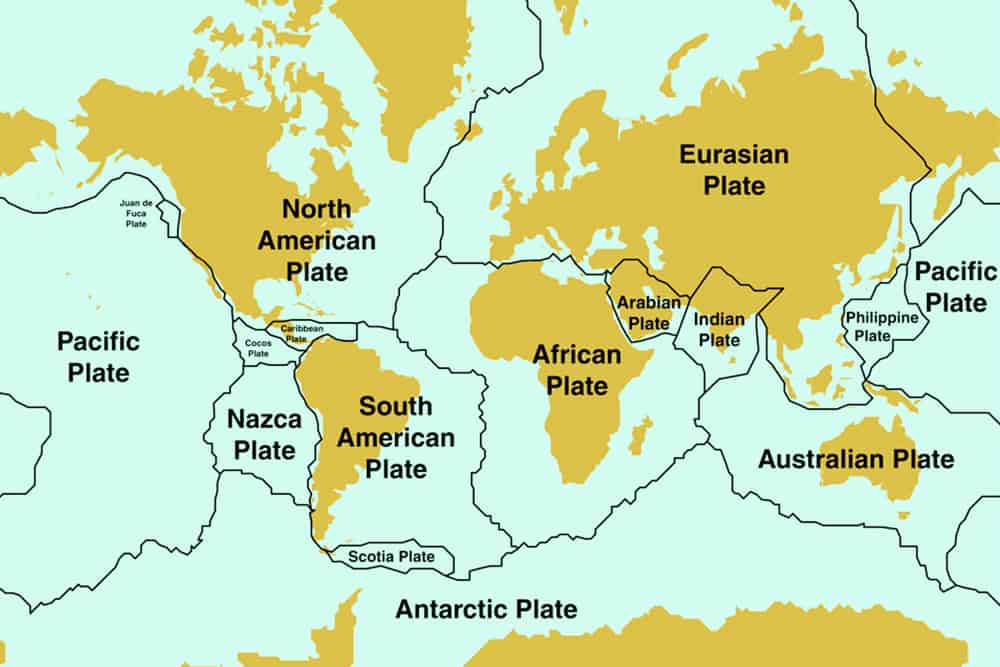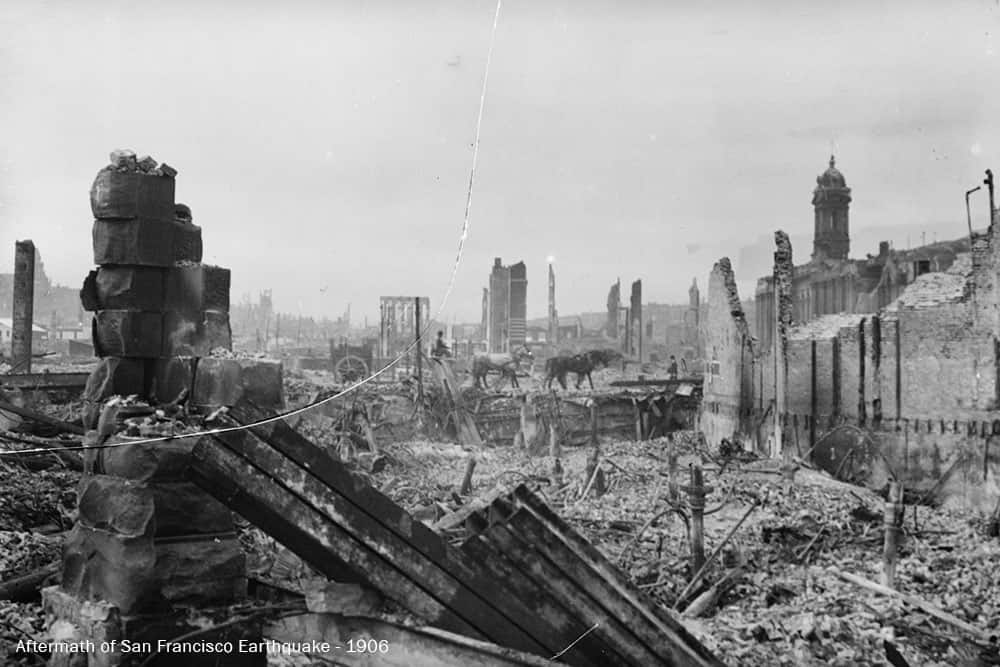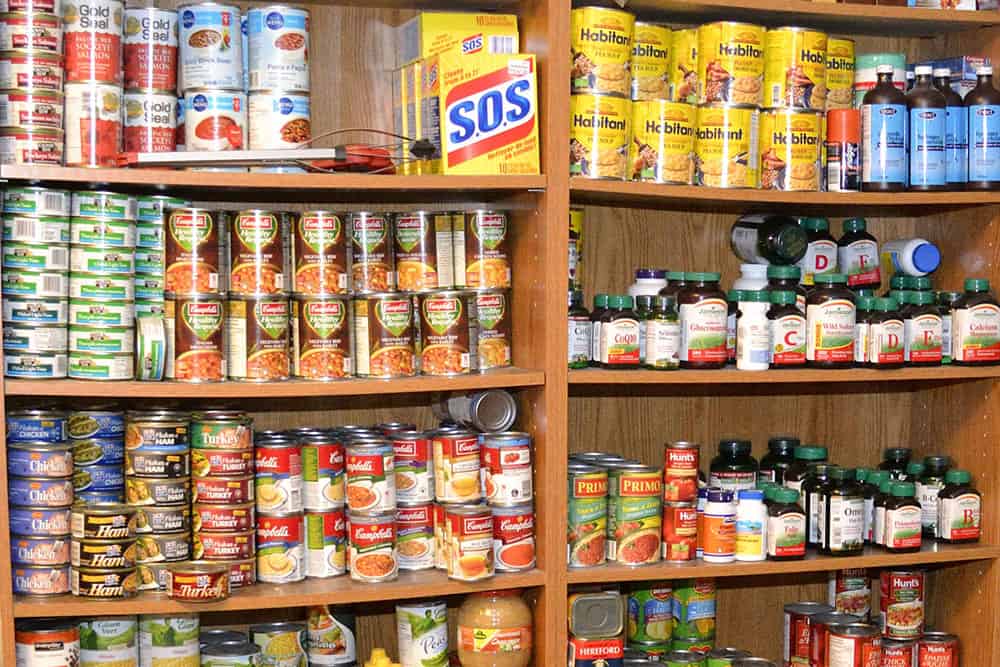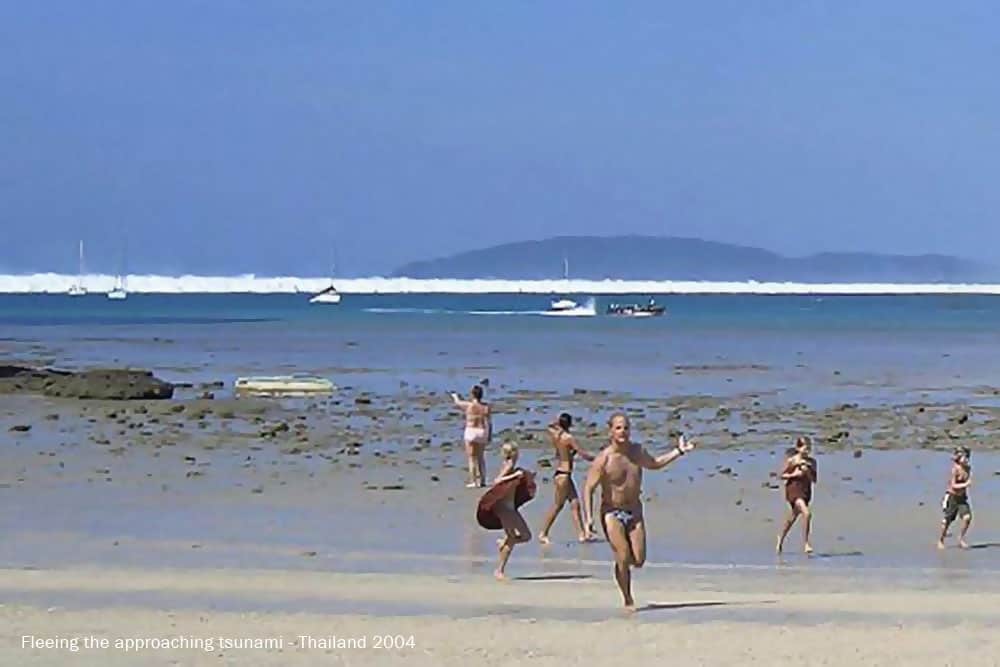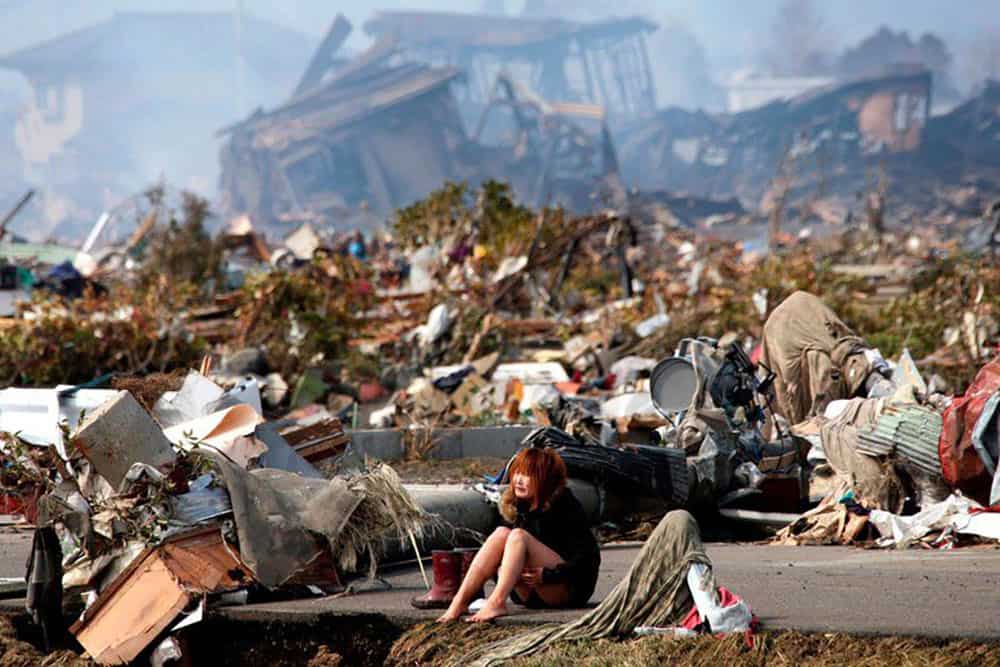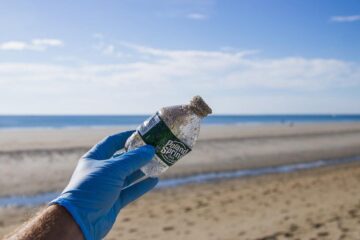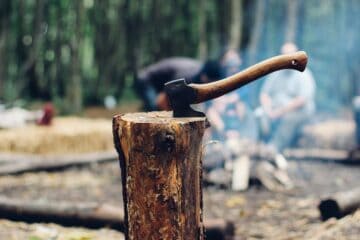We can predict when an eclipse will happen hundreds of years in advance, but we can’t predict earthquakes. We know where they are likely to occur, but not when. That’s because the number of variables involved is beyond calculation. So if you live in an earthquake prone area the best you can do is prepare as though one may strike at any time, because it might.
Earthquake preparation has as much to do with knowing how to react when the ground beneath you suddenly begins to rock and roll as it does with storing supplies. Another important aspect of earthquake survival is knowing how to conduct yourself in the aftermath, where you may have to deal with injuries and environmental hazards are likely to be everywhere.
Below we’ll take a quick look at what an earthquake is, why it happens, and what to do before, during and after one in order to give yourself the best chance of survival.
What is an earthquake?
Until about a century ago most people believed earthquakes represented the wrath of one or more gods or nature spirits. There are still plenty of people who buy into that notion, but for those who like to stay current the once formidable mystery surrounding earthquakes is a mystery no more.
In the first half of the 20th century scientists began finally unlocking the secrets behind earthquakes. Pioneering work by people such as Alfred Wegener (1) pointed the way. In the 1910s he began to develop the idea that continents weren’t actually locked in place as everyone had always believed, but instead moved around. His theory, dubbed “continental drift”, was frustratingly incomplete, however, and he wound up being widely mocked by most geologists of the day.
Others who came later, such as Canadian J. Tuzo Wilson (2), grabbed the baton from Wegener and took it further, refining the idea and adding key pieces to the puzzle. Wilson confidently concluded that Wegener had been right, that the surface of the earth was not set in stone, (so to speak), but was actually comprised of a number of enormous plates that were constantly (albeit slowly) moving around. Where these plates met earthquakes occurred, mountains arose and volcanoes formed.
This theory, ultimately christened “plate tectonics” (3), was formally accepted in the 1960s after a series of articles explaining its mechanisms in detail were published in the journal Nature.
How it works
There are several kinds of earthquakes but they all occur in the regions where tectonic plates meet.
In the case of Japan, the Pacific plate is diving under the Eurasian plate off the Japanese coast. This motion pushes up the mountains and volcanoes of Japan (including iconic Mount Fuji). A sudden release of vertical energy along this plate boundary was the cause of the catastrophic 2011 Tohoku earthquake. That sudden vertical thrust also pushed billions of cubic meters of water upward, causing the tsunami that slammed into the Japanese coast killing thousands and obliterating entire towns.
In other places, such as California, the plates are sliding past each other. The boundary between the Pacific Plate and the North American plates in California is there for all to see in what we know as the San Andreas Fault (4). As the two plates grind horizontally past each other they tend to get stuck, which again causes a tremendous build up of energy.
When that energy is finally released the plates suddenly slide past each other, the pent-up energy radiates out in all directions, and we get an earthquake, such as the Great San Francisco Earthquake of 1906 (5), and more recently, the Loma Prieta Earthquake of 1989 (6). But predicting exactly when that energy might be released is nearly impossible.
On rare occasions an earthquake may send precursors called “foreshocks”. These are small quakes that signal something is going on underground. The problem is, there is no telling when the larger earthquake might occur. It could be the day after a foreshock, or it could be several years later. Or, what was thought to be a foreshock could turn out to be a false alarm.
What parts of the US are earthquake-prone?
While you might get a barely perceptible quiver from time to time in a place like New England the fact is 99.9% of all quakes occur along the boundaries between tectonic plates. In the US that means the west coast where the aforementioned North American and Pacific plates meet. Why not the east coast too?
Because the nearest plate boundary to the east coast is out in the middle of the Atlantic Ocean. And while people in New England may occasionally experience a modest rumble originating from there, most of the energy from incidents along that plate boundary dissipates before it hits the east coast.
So here’s the problem. We now know why earthquakes occur and where, but trying to nail down exactly when is a whole ‘nother story. So the best we can do is recognize whether or not we live in an earthquake zone and if we do, prepare for the worst.
How to Survive an Earthquake: Before
The right time to prepare for an earthquake is before it strikes. If you do that effectively it will make it easier for you to deal with the quake while it is happening as well as the aftermath. Here are the steps government agencies at various levels suggest people living in earthquake prone areas take to prepare for potential quakes.
Identify safe places at home or at work – Make note of places in the house or where you work where you can shelter if an earthquake strikes. That typically means strong tables you can hide under, or a pantry or copy room with no windows. If all else fails you can also stand in a doorway. It can’t hurt to practice moving to these places either so that it becomes second nature.
Formulate an emergency plan – Among other things, that means making sure everyone in your family knows how to get in touch in the event of an earthquake. You can, for instance, arrange for everyone to check in on a particular person’s Facebook page. Also, designate a meet up place in case an earthquake strikes when people are out of the house and communications are down.
Eliminate earthquake hazards in your home – This means moving heavy items from high shelves to shelves nearer the floor. Consider fixing bookcases and the like either to the floor or wall. Don’t have large posters, prints or paintings that are behind glass hanging on the wall. Keep hallways and doorways clear so that you can evacuate quickly if need be.
Stock up on food and emergency supplies – Events of the recent past caused a reevaluation of long ridiculed preppers. As a result, many people have come to appreciate that prepping simply means being ready for any eventuality, including biological threats, hurricanes, blizzards and earthquakes. So take your lead from the preppers and stock up on:
- Non-perishable foods including canned goods, dehydrated food, freeze-dried food, noodles and the like.
- Bottled water. Lots of it. Plan on one gallon of water per person per day.
- If you don’t have access to bottled water, water filters or water purification tablets can be a life saver.
- Emergency gear such as flashlights, a fire extinguisher, Baofeng radios, batteries, an emergency whistle, work gloves to move debris, mylar blankets and more.
- Hygiene items such as soap, hand sanitizer, antiseptic wipes and toothpaste.
- Emergency medical items such as Band Aids, gauze bandages, NSAIDS, splints and rubbing alcohol etc.
Create a bug out bag – A bug out bag is essentially a compact version of your emergency stockpile contained in a heavy-duty backpack. Every component of your stockpile should be represented, but in smaller quantities. The bug out bag ensures you are covered for at least a couple of days if you have to evacuate your home and leave your emergency stockpile behind.
Buy a firearm – While the government won’t mention it the sad reality is that in the event of natural disasters like earthquakes social order has a nasty habit of breaking down. As such, the truly prepared individual should also strongly consider having a firearm on hand to defend their home and loved ones if need be.
How to Survive an Earthquake: During
Chances are that when an earthquake strikes you will get very little or no warning. Because of this you will need to have your ducks in a row ahead of time when it comes to knowing what to do when the ground goes haywire. Here are some of the most important things to remember if an earthquake suddenly strikes…
When you are driving – If you are driving when an earthquake strikes find a safe place to pull over and stop. Make sure you don’t stop under a light pole, power lines, trees or other things that could fall over onto your car. Put your flashers on and engage the parking brake. Most earthquakes last anywhere from a few seconds to a minute (7). So unless the road has been compromised you should be able to drive on in fairly short order.
When you are outside – If you are outside, move away from tall buildings. If you are at home in the yard, move to an open area and stay there. Don’t go back into the house once the quake has started. If you are in the city and it’s possible to do so, move into the center of the street and stay as low as possible. If you are in a park, get low to the ground and stay where you are.
When you are at home or at work – If you are home get under a table or if you’re at work, get under your desk. If no table or desk is available, get low to the floor next to a stout wall near the center of the house or office building. If you are in a shop and there is nowhere to hide, go outside if it’s easy to do so and move away from the building. Otherwise, stay where you are, get low to the floor and hold on to something.
When you are in an office building – If you are waiting for an elevator when the earthquake strikes do not get into the elevator when it comes! If you need to evacuate the building, take the stairs. If there are others around you evacuating, stay calm. Don’t run. All it takes is for one person to trip and fall and people could be trampled.
When there are children with you – If there are small children with you and you are outside, gather them close to you and get low to the ground away from buildings, light poles, power lines, billboards or anything else that might fall on you. If you are indoors, get them under a table or desk, or bring them together, low to the floor, near a strong central wall.
When you are in the mountains – If an earthquake strikes while you are hiking try and find an open area and stay there. Don’t stop at the bottom of a hillside if you can possibly avoid it. If you have no choice but to wait it out on a hillside keep a close watch for falling rocks and stones, landslides or, if it is winter, avalanches (8).
When you are in the bathroom – If an earthquake strikes when you are on the toilet or in the shower the best thing to do is stay in the bathroom, drop to the floor and hold onto something (yes, the toilet will do). The important thing is that you survive. You can worry about your pride and any cleaning up that may need to be done later. Plus you’ll have a funny story to tell your friends.
How to Survive an Earthquake: After
Depending on the severity of the quake the aftermath may be no big deal or it may be rife with dangers. We’re going to assume a major earthquake has occurred and you and your loved ones have survived. That being the case there are a number of things to be aware of, including:
Aftershocks
An earthquake reorganizes the earth along the fault line. But things almost never stay where they came to rest after the initial shock. In most cases further settling and adjusting occurs and this process generates aftershocks, some of which can be nearly as powerful as the original quake.
For instance, the Great Tohoku Earthquake of 2011 (9), which registered a magnitude of 9.0, generated more than 1,000 aftershocks. 80 were magnitude 6.0 or higher and one registered as magnitude 7.9, itself a major earthquake. In the aftermath of a major earthquake you need to be on guard for aftershocks and respond as if they were separate earthquakes.
Tsunamis
If you are at or near the beach during an earthquake you need to be aware of the threat of tsunamis. This is particularly true if the earthquake occurred offshore. If, after an earthquake you notice the water rapidly receding, get as far away from the shore as you can. If you are on foot, find high ground and stay there until the threat has passed. If you are in a locale with designated tsunami shelters follow the signs to the nearest one.
Most of the deaths in the 2011 Tohoku Earthquake were caused by tsunamis, not the earthquake itself. The same was true in 2004 when, in the aftermath of the Indian Ocean Earthquake (10), more than 200,000 people lost their lives due to tsunamis generated by the quake. That said, assuming there has been a tsunami and you have survived, avoid flood waters as much as possible as they may contain chemicals, sewage, broken glass or other debris.
Weakened Structures
Many buildings and things like elevated roadways are weakened by earthquakes and may collapse hours or even days afterward. If the building you are in has been damaged by the quake but is still standing you should evacuate as soon as the shaking stops. If you were outside during the quake do not enter any buildings that sustained damage, even if they appear to be mostly intact.
Residential and commercial buildings may also sustain damage to gas or electric lines. If you smell gas in the building you’re in you should evacuate immediately. In addition, whether you are inside or outside you should keep your eyes open for exposed wires, fallen power lines and other electrical hazards.
Your Home
Even if your home seemingly survived the earthquake you should inspect it carefully as soon as you are able. There may be damage to the foundation that could undermine the entire house. Look for cracks in the walls and ceilings as well, and take note if any parts of the house are tilting in one direction or another.
In addition, open cupboards and cabinets carefully as there may be plates, pots or other things waiting to fall out. Also, check the water pressure. If it’s weak it may indicate a broken line. If the water is dirty or foul smelling don’t use it and call a plumber. Likewise if you smell gas open windows, leave the house and call the authorities. Finally, if you notice any damage take photos if you can. You will likely need them to make an insurance claim.
So those are some things to be mindful of in the aftermath of an earthquake. Now, here are some things you may or may not need to do after the immediate earthquake threat has passed.
- Make noise – First of all, if you are trapped by falling debris call for help or bang on pipes or other surfaces that are available to alert rescuers to your location. If you are unable to call out, but your phone is accessible, it can be used to draw attention even if there is no signal. For instance, you can go into the ringtone settings and sample the different ones. Someone may hear the sounds.
- Take a head count – If you survived and are basically okay take a head count to ensure everyone who was with you when the earthquake began is accounted for.
- Listen – If your home has been damaged and someone is missing, stay quiet and listen carefully. They may be calling for help or making noise to get your attention.
- Check for injuries – Check yourself and anyone with you for injuries. If someone is hurt, retrieve your first aid kit and treat the injuries as best you can.
- Call 9-1-1 – If someone is trapped or seriously injured (and you are able to get a signal) call 9-1-1.
- Assess the situation – Once you have accounted for everyone and treated any injuries it’s important to get some indication of the extent of the disaster. If TV is out, break out the Baofeng and tune into NOAA Weather Radio (11) for useful information. In addition, most smartphones today come with an option to enable what are called WEAs, or Wireless Emergency Alerts (12). Enabling this can greatly increase the amount of information at your disposal.
- Break out the emergency supplies – Depending on the scope of the disaster you may have to hunker down in your home for several days. If that is the case you may need to access your emergency food stocks, water and other supplies to make sure everyone is fed and taken care of while you wait for help.
- Grab the bug out bag before you evacuate – If you are unable to stay in your home grab your bug out bag, Baofeng radio(s) and firearm and make for the nearest shelter. If you have difficulty finding an official shelter your bug out bag supplies will sustain you until you do.
As is the case with so many other things in life, surviving a major earthquake has a lot to do with preparedness. If you are well prepared, have stockpiles of vital supplies, know how to react when an earthquake strikes and what to do once the ground stops shaking you will greatly increase the odds that you and your loved ones will survive.
